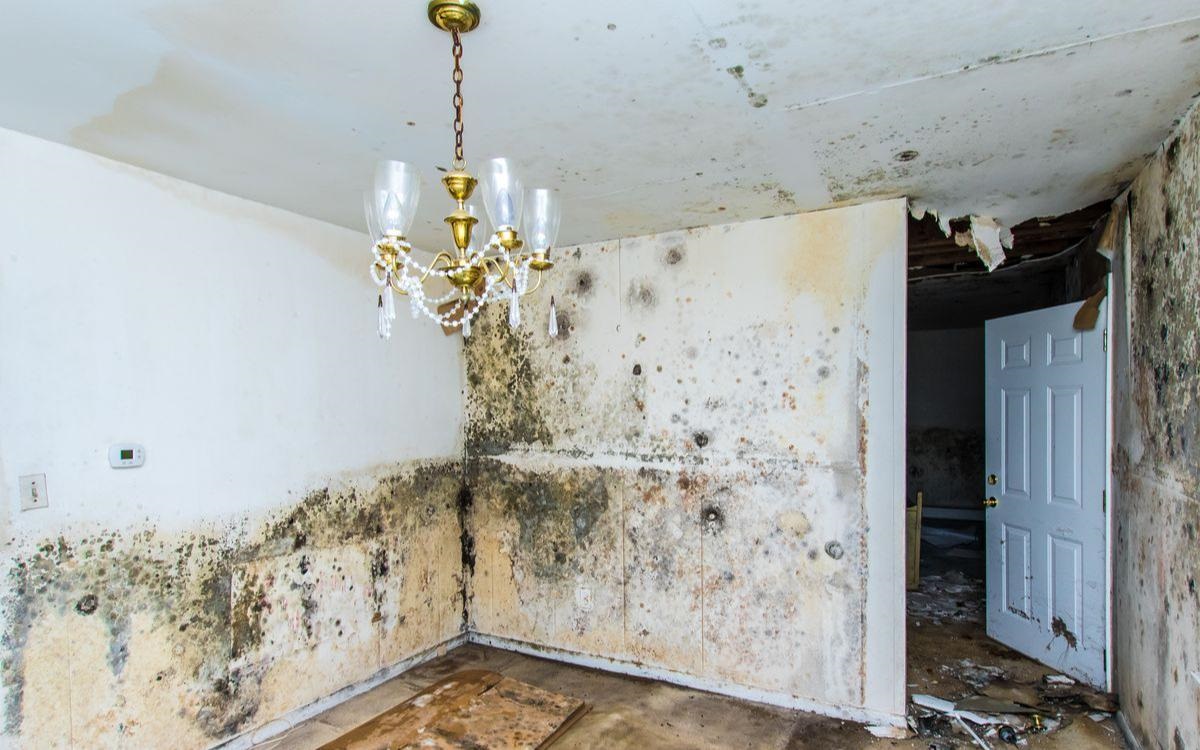Identify Common Mold Spots At Home
Mold can grow in many places around the home, especially where there is moisture. Common spots are bathrooms, kitchens, basements, and window areas with condensation. Mold also often appears in areas with poor air circulation, like closets or corners of rooms. Rooms that stay damp or have water leaks, such as near plumbing pipes, are also at risk. It’s essential to check these spots often to catch any early signs of mold, like small black or green spots on walls or ceilings.
Recognizing these areas helps in tackling mold before it spreads. This way, you can clean up small patches before they turn into larger issues that need professional help. Keeping these spots dry by wiping up spills and fixing leaks promptly can make a big difference in preventing mold growth. Identifying these spots early is a key step in keeping your home mold-free and healthier for everyone.
Inspect Walls And Ceilings For Mold
Walls and ceilings are common places where mold hides, especially in areas with past water damage or leaks. Mold on walls often looks like spots or patches that can be green, black, or even white. If you see any peeling paint, dark stains, or areas that feel damp, these may be signs of mold. Ceilings, especially those close to the roof, are also vulnerable if there are leaks or moisture issues. Regularly inspecting these areas can help you find and clean mold early.
Use a flashlight to look closely, especially at corners or near the top of walls. Mold left untreated on walls or ceilings can spread, affecting your home’s air quality. If you find mold in these areas, clean it safely with appropriate solutions, or consider hiring a professional if it’s widespread. Routine inspections and quick action can prevent bigger problems and keep your home safer.
Check Bathroom Areas For Mold Growth
Bathrooms are one of the most common areas for mold growth because they are often damp from showers, sinks, and baths. Mold may grow on tiles, walls, or even on the ceiling if ventilation is poor. Showers, sinks, and around toilets are spots to check, especially where water tends to collect. Mold in bathrooms can look like dark spots on grout, tile, or around the edges of sinks. Keeping bathrooms dry is crucial.
Using a fan or opening a window after showers helps reduce moisture. Wiping down wet surfaces regularly and cleaning with mold-preventing solutions can keep mold away. Replacing old grout or caulking in wet areas can also help prevent mold. Regularly check and clean bathrooms. This will prevent mold and ensure a healthier, more comfortable space for everyone.
Prevent Mold With Proper Ventilation
Good ventilation is key to preventing mold. This is vital in damp rooms, like kitchens, bathrooms, and basements. Without proper airflow, moisture can linger, creating a perfect environment for mold to grow. Installing fans in kitchens and bathrooms helps move out moist air after cooking or bathing. In basements, dehumidifiers are useful for keeping the air dry, especially in warmer months when humidity is higher. It’s also a good idea to open windows when possible to let fresh air circulate.
Poor ventilation makes it harder for moisture to escape, causing dampness and eventually mold. Adding vents or fans where they’re needed most and letting air circulate in closed spaces like closets can help prevent mold from forming. With the right airflow, your home can stay drier and mold-free.
Treat Mold On Household Furniture
Furniture can also grow mold, especially if it’s in damp or humid areas like basements or storage rooms. Upholstered furniture and wooden items are most vulnerable, as these materials can hold moisture. If you notice any mold on furniture, clean it right away to prevent further growth. For fabric furniture, clean it with appropriate solutions and make sure it dries fully. Wooden furniture can be wiped down with a damp cloth and a mold-fighting cleaner.
Keeping furniture dry is crucial. Placing furniture in well-ventilated rooms helps reduce mold risks. Avoid putting furniture against walls in damp rooms, as this can trap moisture. If mold is a recurring problem, consider investing in moisture-proof covers or moving furniture to drier areas. Treating mold on furniture quickly protects not only the items but also the air quality in your home.
Safely Clean Mold From Carpets
Carpets can trap moisture, making them a potential mold hotspot, especially in basements or areas prone to spills. If a carpet stays wet for too long, mold can start growing in the fibers or on the underside. Mold in carpets often causes a musty smell or looks like small dark spots on the surface. If you find mold in carpeted areas, cleaning it quickly is important. Use a mold-fighting cleaner designed for carpets and let the area dry completely.
For large patches of mold, it might be best to replace the carpet to ensure the mold doesn’t spread. Avoiding spills and quickly cleaning up any wet spots can prevent mold in the first place. Consider using area rugs in damp rooms, as these are easier to clean or replace. Keeping carpets dry and clean helps prevent mold growth and maintain a fresher home environment.
Use Chlorine Dioxide For Mold Removal
Chlorine dioxide is a powerful option for tackling mold and is often used in professional cleaning. This chemical effectively removes mold by breaking down its spores, stopping it from growing back. Chlorine dioxide products are available as sprays or tablets and can be used on surfaces where mold commonly grows.
When using chlorine dioxide, follow the instructions. Ensure the area is well-ventilated, as strong chemicals can affect air quality. This solution is often used in places that need heavy-duty cleaning, like basements, bathrooms, or areas with large mold patches. For household use, make sure the product is safe for the specific surface you’re treating. Chlorine dioxide is effective at removing mold from various areas of the home. It is a good option for homes with recurring mold issues.
Regularly Monitor For Mold Reappearance
After cleaning mold, it’s essential to check areas in your home for any signs of it coming back. Mold can reappear in places that stay damp or have recurring water issues. Regular checks can include looking for new spots on walls, ceilings, or floors and noticing any musty odors. Mold tends to grow in hidden spots, so be thorough in your checks.
If you recently removed mold, consider getting mold testing services Maine to ensure all traces of mold are gone. Regular monitoring and early detection of mold can save time and prevent larger problems down the road. Keeping an eye out for mold helps ensure a safer, cleaner living space.
Hire Professional Mold Remediation Services
For larger mold problems, it may be best to call in professional services. Professionals have the tools and experience to remove mold, especially in hard-to-reach areas. Some types of mold, like black mold, are harmful to health and should be handled by experts. Professional mold removers use special cleaners and techniques to remove mold thoroughly. They can also find hidden mold that might not be visible right away, ensuring a complete cleanup.
For severe or recurring mold, hire mold remediation services Maine. They can provide a long-term solution. Using professionals ensures safe mold removal. It also reduces the risk of it coming back. This gives you and your family peace of mind.
Read More: How To Remove Odor From Leather Bag?




